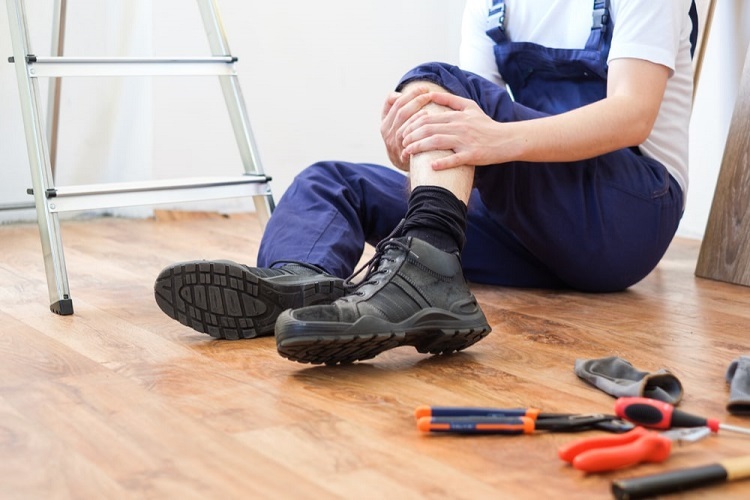Recent scientific research is beginning to shed light on the impressive range of benefits tied to audio haptics, with exciting implications for both physical and mental health. This technology is being used in everything from fitness routines to stress management tools, and it’s quickly gaining traction as a game-changer in the wellness world. Especially when it comes to getting a better night’s rest.
One of the most innovative applications of haptic feedback is haptic beats—a technology that’s revolutionizing how we experience sound. Traditionally, audio has been limited to what we can hear, but haptic beats invite the body to participate in a completely new way. By integrating vibrations that match the rhythm and intensity of sound, haptic beats allow us to not only hear music or calming tones but also feel them, creating a deep, multisensory experience that enhances the therapeutic potential of sound.
Table of Contents
Sound That You Can Actually Feel
Imagine listening to a soothing melody while feeling gentle pulses that resonate through your body, aligning with the sound waves. It’s an immersive connection that touches both body and mind, making it easier to reach states of relaxation, focus, or even motivation. The ability to physically engage with sound in this way has opened up new possibilities for improving mental well-being, from reducing stress and anxiety to fostering a deeper sense of calm.
Haptic beats tap into the body’s natural response to vibration, which can help regulate mood and even assist in physical recovery after exercise. As this technology evolves, wellness experts are beginning to see it as a powerful tool for enhancing daily rituals, whether that’s through meditation, sleep, or simply boosting your energy throughout the day.
Transform Your Sleep with Multisensory Comfort and Sound Therapy
GoodVibeSleep is pioneering a whole new approach to rest and relaxation with one of the first audio-haptic bundles in the mattress and adjustable base category. This isn’t just a bed—it’s a full sensory experience designed to elevate both sleep and entertainment. Imagine lying back and not only feeling the comfort of your mattress but also being enveloped in soothing sound vibrations that help guide your body into a state of deep relaxation. With GoodVibeSleep, restful nights take on a new dimension, combining advanced sound therapy with ultimate comfort to create the perfect sleep environment.
Soothing Sleep
Achieve unparalleled relaxation with GoodVibeSleep’s adjustable bed, enhanced by sound therapy that taps into the power of soothing audio frequencies. These vibrations work in harmony with your body, helping you drift into the deepest sleep and wake up feeling fully rejuvenated. The audio-haptic integration creates a calming atmosphere, making it easier to unwind and experience restorative rest.
Elevated Entertainment
More than just a place to sleep, GoodVibeSleep enhances your entertainment, too. Thanks to its innovative 4D audio-haptic technology, your favorite movies, music, or shows come to life with an immersive experience that goes beyond sound. Finely tuned speakers and subwoofers are embedded into the bed to deliver rich audio, while the haptic feedback adds a physical dimension, letting you feel every beat and rhythm as though you’re right in the action.
Rhythmic Relaxation
GoodVibeSleep introduces the concept of rhythmic relaxation, where sound frequencies are carefully selected to sync with your body’s natural rhythms. These gentle vibrations, combined with the serene comfort of the mattress, lull your body into a deeper state of rest.
Unlocking the Many Benefits of Audio Haptics
Pain Management and Rehabilitation
Haptic feedback is also gaining attention in the field of pain management and rehabilitation. Vibratory stimulation, in particular, has been shown to alleviate pain and discomfort. A study published in The Journal of Pain found that low-frequency vibrations can reduce the perception of pain, offering a non-invasive solution for pain relief. Additionally, haptic feedback is being used in physical therapy, where consistent, rhythmic vibrations can aid in muscle recovery, improve joint mobility, and accelerate the rehabilitation process .
Stress Reduction and Relaxation
Haptic beats have also been linked to stress reduction. Research published in Applied Psychophysiology and Biofeedback demonstrates that rhythmic sensory stimuli, including haptic feedback, can significantly influence stress responses. By lowering cortisol levels, the body’s primary stress hormone, haptic feedback provides a calming effect that promotes relaxation and mental well-being .
Improved Sleep Quality
Incorporating haptic feedback into sleep routines has shown promise in improving overall sleep quality. A study published in Frontiers in Psychology demonstrated that vibratory stimulation can help reduce sleep latency and improve the depth and quality of sleep. The rhythmic nature of the haptic beats can create a soothing environment that lulls the body into a restful state, resulting in more restorative sleep.














Comments